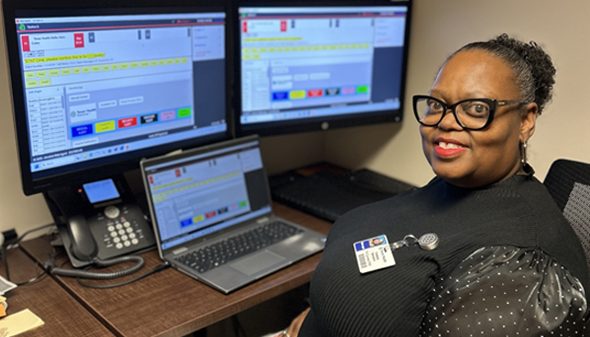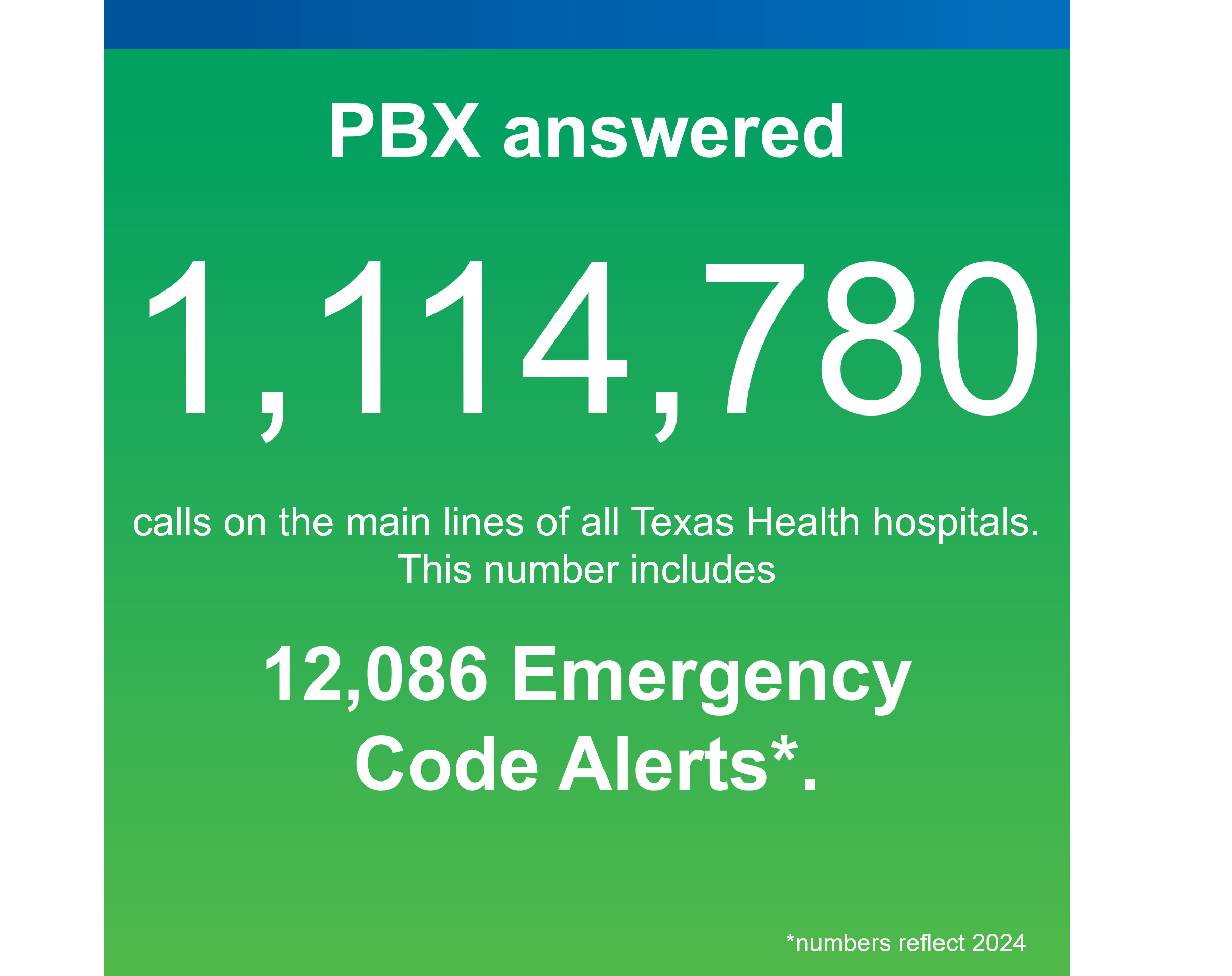Thank you for calling Texas Health. How can I help you?”
It’s the familiar greeting heard when calling the direct line of any Texas Health hospital. But behind that steady voice lies a world of calm chaos — where thousands of daily calls are answered by a team coordinating everything from routine questions to lifesaving emergency responses.
Operators in the PBX — which stands for Private Branch Exchange — are responsible for managing and operating private telephone networks used within Texas Health. What once began as a team of phone operators at a long table has since evolved to a centralized team of specialized and tenured operators who work remotely or at control centers at Texas Health Harris Methodist Hospital Fort Worth and Texas Health Presbyterian Hospital Dallas.

Fedisha Hampton, manager, Texas Health Connect and PBX Operations, leads a team of 32 operators connecting patients, families and care teams across 17 hospitals. Having been on the PBX team for 31 years, Hampton has been a part of the evolution. Through the changes and improvements to PBX operations, the goal has remained the same — being a voice of calm and compassion no matter what the call brings. “I like to tell my team that we are the switchboard and signal center of the hospital system,” Hampton shared. “We quietly power the connections that keep people moving.”
From routing everyday calls to handling emergency code alerts, the PBX team operates behind the scenes but at the core of hospital operations. Their work isn’t just logistical — it’s emotional, and sometimes lifesaving.
Each operator is trained not just on protocol, but also on how to stay calm and compassionate during the nonstop calls coming in 24/7. Calls involving trauma patients, strokes and baby deliveries are part of the daily reality. “You never know what the next ring will bring,” Hampton said.

That’s why she emphasizes having a healthy well-being as part of work readiness: “I encourage my team to step away if they get overwhelmed,” Hampton said. “Breathe and take a reset. We’re here for each other.”
Their unity and quick thinking are central to their success. As Saba Haileslassie, supervisor, virtual control center, PBX, explained, “PBX is the gateway to everything — even if we may not know everything. We will think quick on our feet to find a solution. I always say, ‘one band, one sound.’ If one is offbeat, we all sound bad. Compassion and efficiency are top priorities when we serve our callers and each other.”
Hampton recalled a situation that showcased their quick thinking when an operator responded to a call from a care team member asking for a trauma code. After hearing that the patient was pregnant, the operator took the initiative to call for an OB response as well. The caller later expressed gratitude that everyone who needed to be there was there, without delay. “That decision made a difference,” Hampton said. “We now have a new code, Trauma OB Response, for cases like that.”
Even in the hardest seasons, including the COVID-19 and Ebola outbreaks, the team stayed grounded. They adapted and balanced responsibilities with emotional resilience when answering thousands of calls from frightened families and those coordinating care, and connecting those in crisis to hotlines and resources they needed.

“Our PBX operators are often the first touchpoint for someone reaching out in need — and the steady voice guiding a response during emergencies,” said D. Scott Phillips, vice president, Texas Health Connect, patient access and navigation. “What the PBX team does every day is nothing short of extraordinary. Their ability to connect, comfort and coordinate care across our entire system makes them an essential part of our Mission.”
What fuels Hampton’s leadership is helping her team grow. “The most rewarding thing is seeing someone go from nervous trainee to confident operator. When they send their first code, you can see the pride on their faces that they made a difference.
“We are servants,” she said simply. “We’re here to help — to be the calm, the guides, and sometimes the hope on the other end of the line.”
Whether it’s a vision-impaired patient who needs to be connected, a mother who had a baby in the parking lot or an ER care team member delivering a critical code — PBX will be there to take the call.
published

